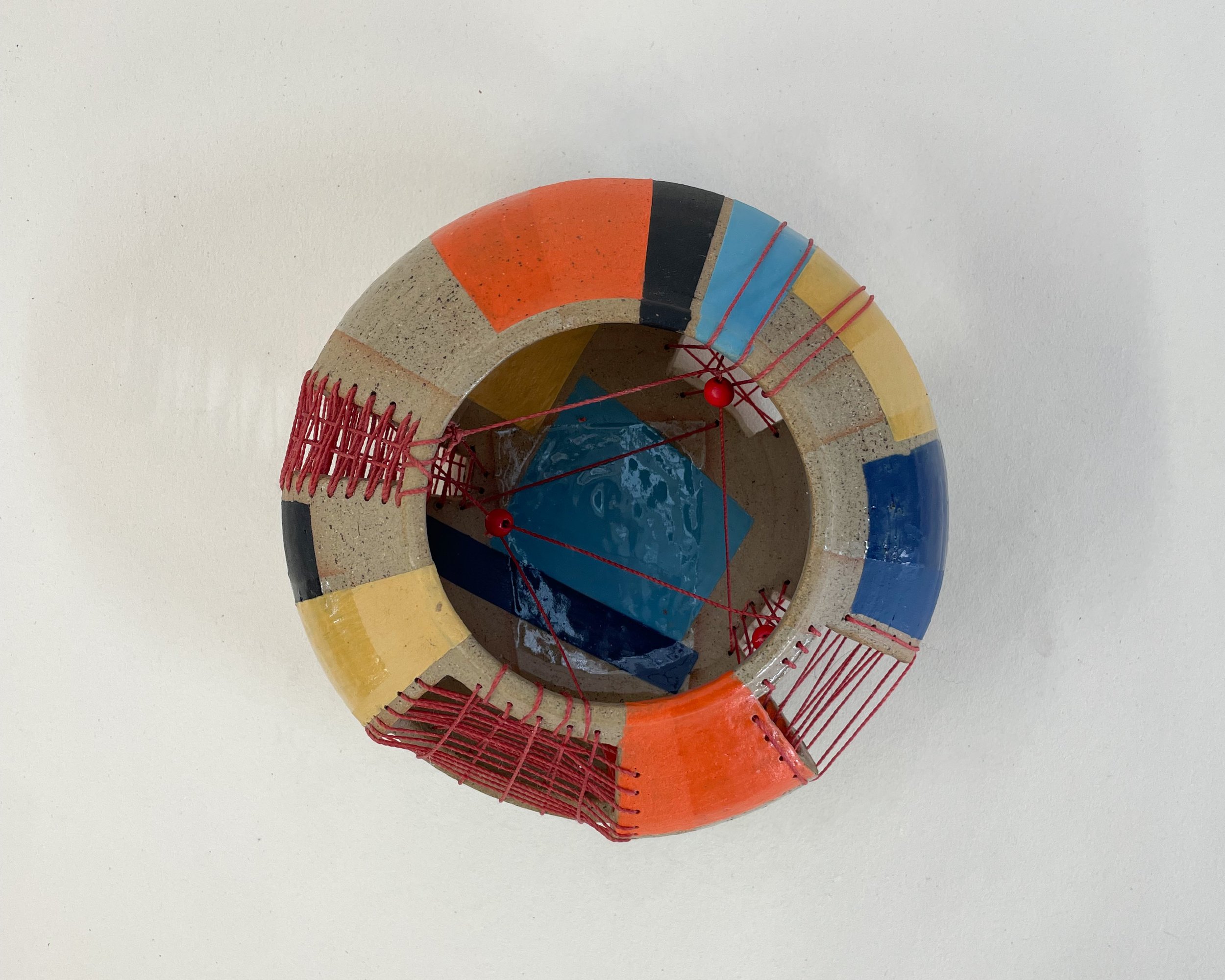Doesn’t Hold Water
Among the key elements of my work with clay are the exploration of its contemporary significance as a medium of art and the challenge to traditional perceptions of ceramic vessels: What is the relationship between purpose and form? Must a vessel contain to fulfill its function? These questions resonate deeply with themes of identity, belonging, and transformation. As an expatriate, I navigate the tension between past and present, seeking security in new environments while remaining connected to old ones. My personal journey materializes in works experimenting with form and function, presence and absence, inside and outside.
‘Doesn't Hold Water’ explores these ideas through two types of vessels: boats and vases. Traditionally, vases hold water to sustain, while boats repel it to protect. In this series, both are perforated, cut, and sewn, with threads and wires piercing their walls, blurring boundaries, and redefining containment. The boats, symbolizing journey and search, were first bound with metal wires, later replaced by colorful cotton threads—softening their rigidity while preserving their tension. Over time, the threads envelop the vessels, striving to fill and reshape them. This pursuit of wholeness in a container that does not contain continues in the form of the vase, where painting and sewing link the interior and exterior, forging new connections. Neither full nor empty, the vessels mark a turning point between the past and future. Embracing the void as a space of potential, they seek completeness beyond containment—transforming absence into possibility and incompleteness into growth.
Stoneware, wire | 50 cm | 2024 | Photo: Shay Ben Efraim
Stoneware, cotton thread | 28 cm | 2024
Stoneware, wire | 28, 50 cm | 2024 | Photo: Shay Ben Efraim
Stoneware, cotton thread | 28 cm | 2024 | Photo: Shay Ben Efraim
Stoneware, cotton thread | 28, 42 cm | 2024 | Photo: Shay Ben Efraim
Stoneware, cotton thread | 28 cm | 2024
'Enmeshed' | Stoneware, engobes, glaze, nylon thread | 12 cm | 2024
'Enmeshed' | Stoneware, engobes, glaze, nylon thread | 12 cm | 2024
Stoneware, engobes, glaze, cotton thread | 48 cm | 2024 | Photo: Shay Ben Efraim
Stoneware, engobes, glaze, wire, cotton thread | 20 & 16 cm | 2024 | Photo: Shay Ben Efraim
'Leaky Void' | Stoneware, engobes, glaze, cotton thread | 18 cm | 2025
'Strings Attached' | Stoneware, engobes, glaze, nylon thread | 37 cm | 2024
Stoneware, engobes, glaze, nylon thread | 15 cm | 2023
Stoneware, engobes, manganese oxide, glaze, cotton thread | 49 cm | 2024 | Photo: Shay Ben Efraim
Stoneware, engobes, glaze, wire, cotton thread | 14 & 13 cm | 2024 | Photo: Shay Ben Efraim
Stoneware, engobes, glaze, cotton thread | 14 cm | 2024
'Stretch Test' | Stoneware, engobes, glaze, cotton thread | 19 cm | 2025
Stoneware, engobes, glaze, cotton thread | 50 cm | 2024 | Photo: Shay Ben Efraim
'In between' & 'Leaky Void' | 2025
Stoneware, manganese oxide, glaze, wire, cotton thread | 58 cm | 2024 | Photo: Shay Ben Efraim
Stoneware, engobes, glaze, cotton thread | 20 cm | 2024
Exhibition "In Conclusion..." at the Benyamini Center for Contemporary Ceramics (2024) | Photo: Shay Ben Efraim





















